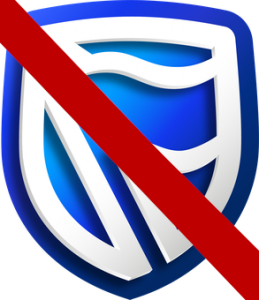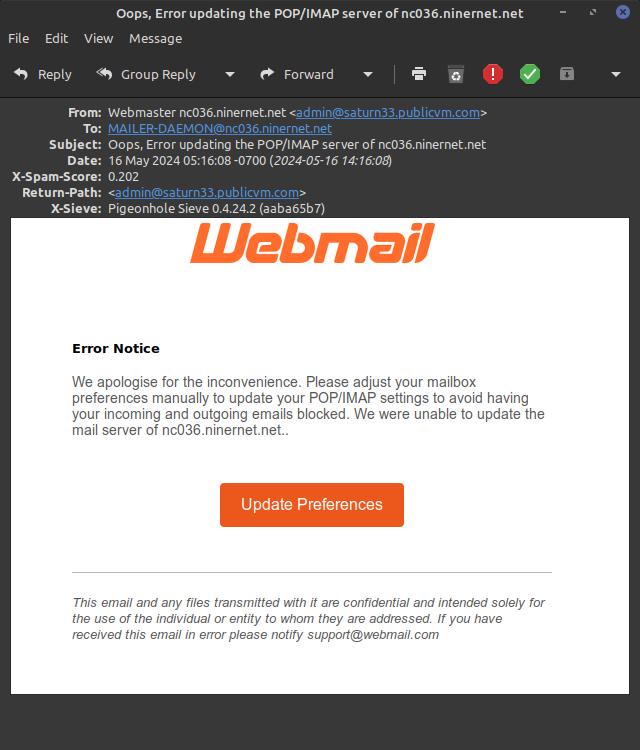Executive summary: Please pay your invoice on or before the due date!
We are writing this brief post to address a trend we have noticed in recent months. I want to make clear, though, this it does not apply to most of our clients, but it does apply to a significant number of them. However, it’s something everyone needs to know.
The trend is a tendency to leave payment of your invoice until what some people seem to think is an acceptable last minute.
I will admit that I myself have said a few times in the past that you have until the expiry date of your service to pay your invoice. My bad. This does apply to services that are 100% under our control — e.g., shared hosting (not VPS hosting though) — but if you wait until the expiry date of a service that is partially under the control of a third party — e.g., a domain registrar, a certificate authority, etc. — you are taking a big chance if you wait until the expiry date, because the chances are now significant that the service provided by the third party will go offline for a time.
If you look at our “billing procedures” page you will see that we aim to send our invoices on the 15th of the month. I admit that we don’t always meet that self-imposed deadline, but even if we miss it by a couple of days, this doesn’t affect the fact that our invoices must be paid in good time before your services expire. (Please keep a record of those dates and pay attention to our reminder emails.) Let’s look at the first example on that page, with an expiry date of 10 March. If it’s only your shared hosting that expires on that date, you get a one-week grace period (unless you’re in the process of transferring out), so even if you pay a day or two late, your hosting will not be interrupted.
However, if it’s your domain registration that expires on that date, it will go offline sometime on the expiry date between 00:01 and 23:59. So if you pay a couple of days late, your domain will be offline for a couple of days. If you’re one of the few people who don’t mind that, no problem; if you do mind that — as, I believe, most of you do — don’t wait until the last minute! Seriously.
The big however here though is that the registrar we currently use — which has changed names so many times in the last few years it’s difficult to keep track, but they currently go by the names “Team Internet” and/or “CentralNic Reseller” — actually deletes some domains before they expire! We currently know (without being informed in advance, mind you) that they delete dot-africa and dot-za domains two days before they expire. Why? We have no idea. We brought this to the attention of the dot-africa registry (Registry Africa Limited) and the dot-za registry (ZA Registry Consortium (Pty) Ltd.) earlier this year and, while they initially seemed to understand our outrage, six months later they sided with the registrar who is selling 365 days, but only providing 363 days. This is because the registrar has re-written contracts to redefine the term “year” to be whatever they want it to be. (They used to do this with dot-ca domains as well, but when we complained to the dot-ca registry, the Canadian Internet Registration Authority did the right thing and put our registrar in their place and made them comply with the dot-ca domain lifecycle.)
The result is that clients with dot-africa and dot-za domains who thought they had until the day their domains expired to pay their invoice, found that not only did their domains stop working two days before they were supposed to expire, but they also had to pay additional fees to have the registrar “un-delete” their domain, and wait for them to do so. These fees add up to several years worth of renewal fees. This also used to happen to dot-ca registrants until we complained and won that case.
It is also worth pointing out that if you acquired your domain through a “drop catcher” — a company that snaps up expiring domains the moment they “drop” — you also need to ensure that you pay your invoice well before your domain expires, at least a week if you’re paying by an electronic method. This is also because the domain registrar that almost always catches these domains (Network Solutions, aka Netsol) also engages in subterfuge to prevent our normal process of transferring your domain to our registrar, and also charges additional fees that add up to several years worth of renewal fees. If you wait until the day your domain expires to pay your invoice, you will find that we will have to issue a new invoice to you to pay these fees before we can transfer and renew your domain.
But the point of this post — which is much longer than I envisioned — is this: don’t delay paying your invoice until the day your service expires or a day or two beforehand. Sure, if the money sits in your bank account for a few more days, and you’re lucky enough to earn interest on your balance, you’ll earn a few cents or ngwees more, but at the risk you’ll have to pay significantly more dollars or kwachas! Is that worth it? No, it’s not.
Our invoices used to include a “PLEASE PAY BY” date, three weeks after the invoice date. That was our overly polite way (although that’s not the full reason) of describing a due date. Because most of our services are prepaid, and we stopped charging interest on late payments many years ago, we became quite loosey-goosey. However, we have gone back to describing that date as a “due date”, and on that date the clock starts; every day you wait to pay after that date increases the risk that your now-unpaid service will go offline when it expires.
DON’T TAKE THAT CHANCE. PAY BEFORE THE DUE DATE!
Update, 2024-11-25: Clarified that you only get a week’s grace period on shared hosting if you are not already in the process of transferring your hosting out.

